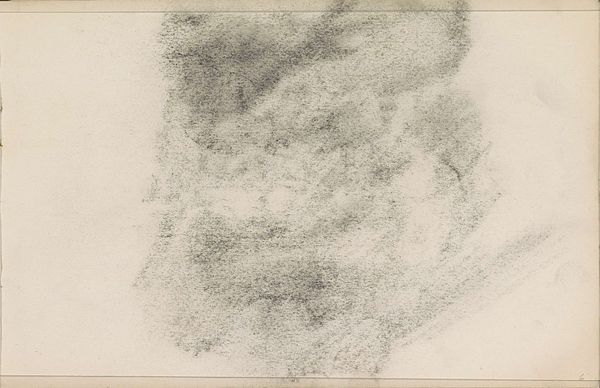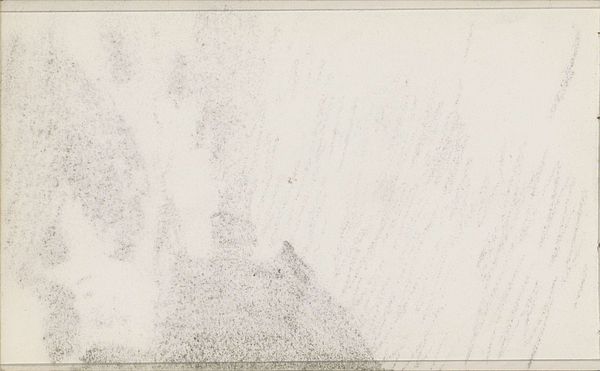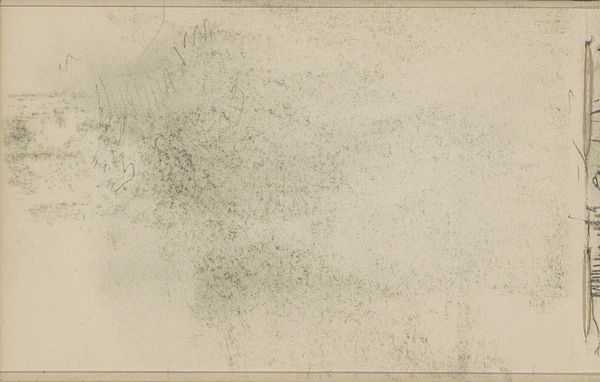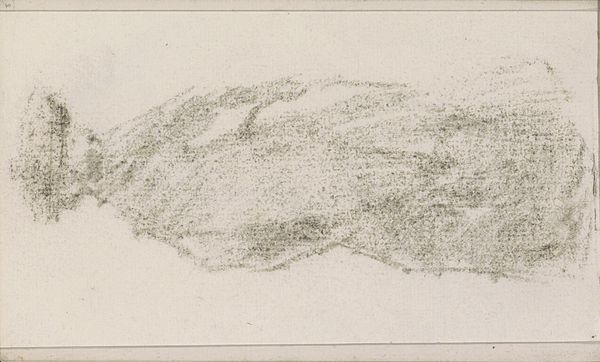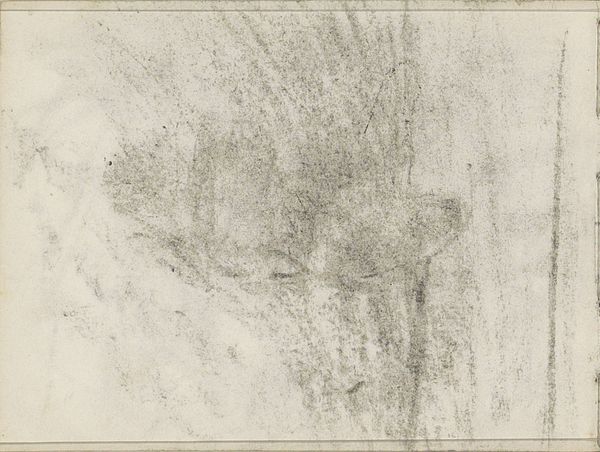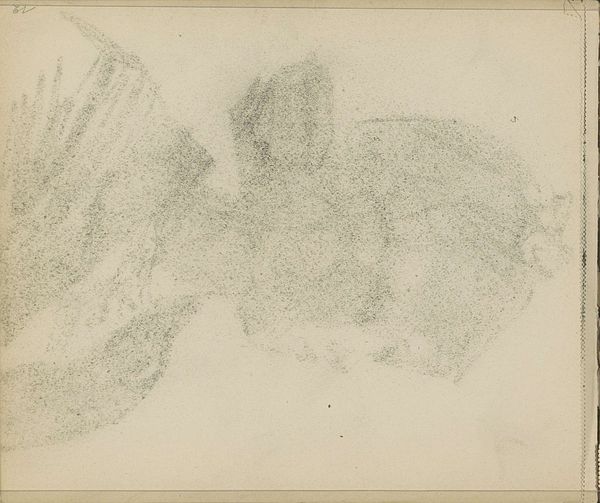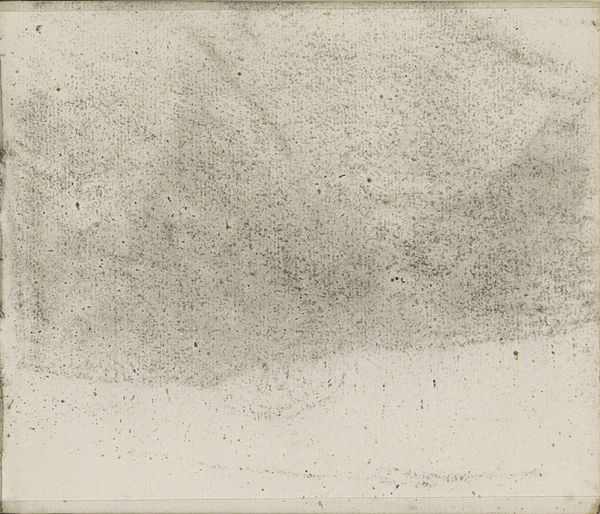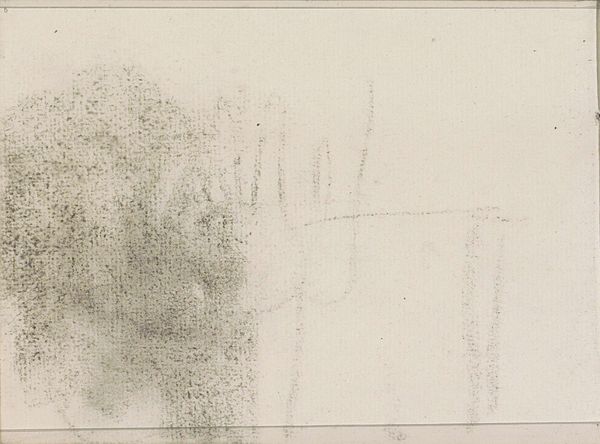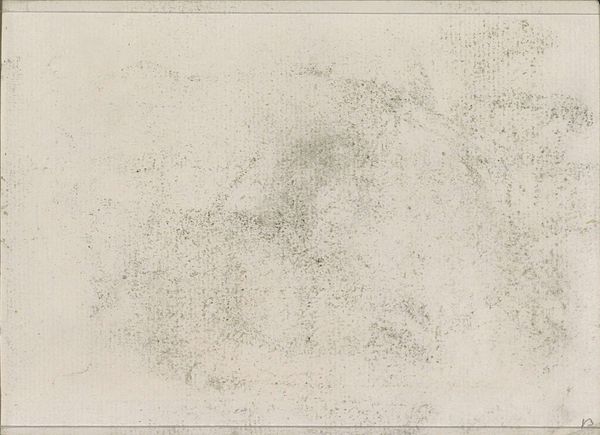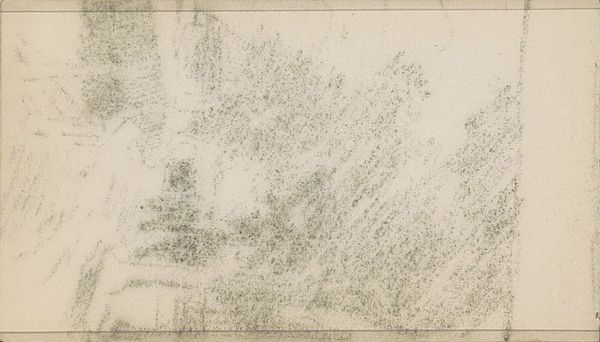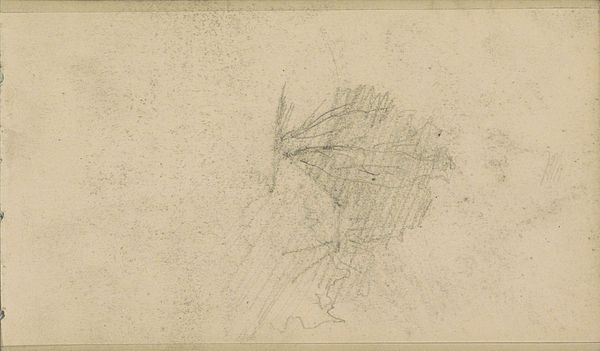
drawing, graphite, charcoal
#
drawing
#
pencil sketch
#
charcoal drawing
#
pencil drawing
#
abstraction
#
graphite
#
charcoal
#
monochrome
Copyright: Rijks Museum: Open Domain
Editor: Well, that’s intriguing! It's like a cloud, or maybe a photographic impression. What can you tell me about it? Curator: This piece, “Abklatsch van de krijttekening op pagina 21,” created by Isaac Israels between 1887 and 1934, and housed here at the Rijksmuseum, is intriguing, indeed. It's a transfer drawing in graphite and charcoal. Notice the stark monochrome palette and the textures achieved with the graphite. Editor: The smudging and the blending create an incredibly ethereal quality. It’s unsettling yet calming. Is that intentional, or just the result of the medium? Curator: I believe that tension is exactly the point. Consider the title itself. “Abklatsch” is a transfer – an echo of the original. The ambiguity inherent in something that's been copied introduces a certain distortion or softening. Look how the details of the apparent form dissolve at its edges. It denies closure. Editor: So, you're saying the act of transferring inherently imbues the work with layers of meaning about duplication and representation? Do we know what the original chalk drawing on page 21 depicted? Curator: Unfortunately, the subject of the original drawing is unknown, which deepens the mystery. Its symbolism resides less in what is depicted, and more in the way that the depiction has been rendered through technique and reproduction. The stark light and shadow are almost primordial. Editor: That absence makes me think about loss and memory. What is left behind is not the vibrant image, but an insubstantial echo of what once was. Perhaps it represents a moment slipping from consciousness. Curator: Precisely. Israels, in choosing this transfer method, emphasizes the fragility of images and memories themselves. It forces the viewer to confront not the subject itself, but the process of representation and its inherent limitations. Editor: Well, it’s a subtle yet impactful work. It's amazing how a simple transfer drawing can generate so much contemplation about process, loss, and even the nature of reality. Curator: It truly speaks to the power of extracting meaning from form and process, not simply the subject matter. An evocative testament to the ephemeral.
Comments
No comments
Be the first to comment and join the conversation on the ultimate creative platform.
